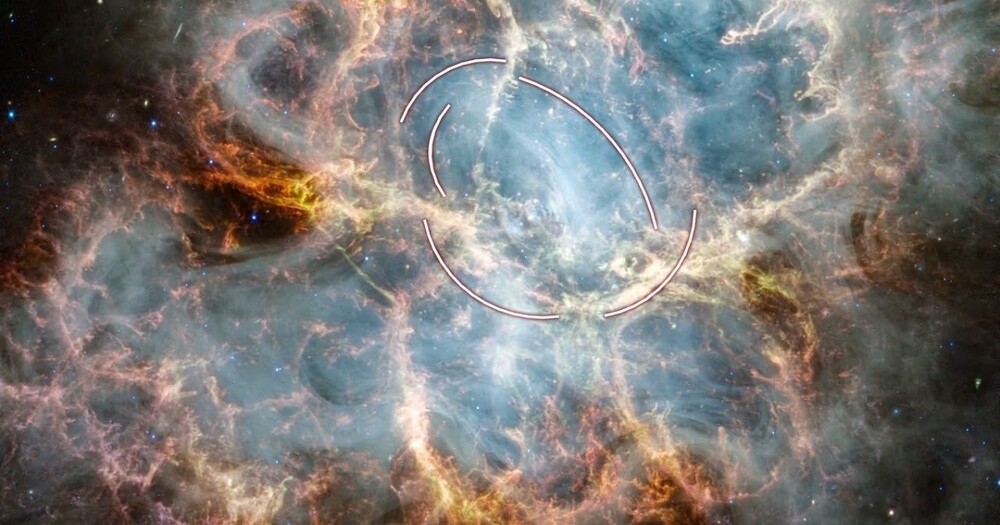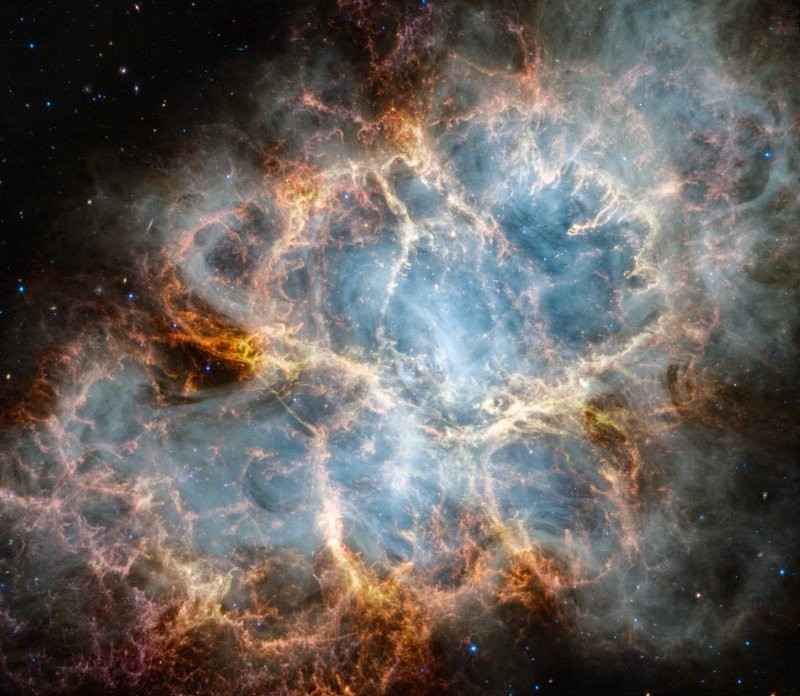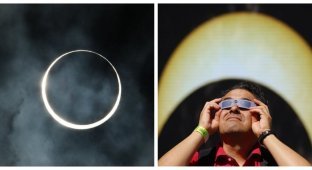Heart of a Dead Star: "James Webb" explores the Crab Nebula (4 photos + 1 video)
The Crab Nebula is the remnant of a supernova, the explosion of which was observed by earthlings from a distance of 6,500 light years in 1054. NASA's James Webb Space Telescope has provided a detailed image of the amazing object. 
The image was taken by the $10 billion orbiting James Webb Infrared Observatory.
"The new data allows us to accurately determine the composition of the ejected material, in particular the iron and nickel content. We will be able to find out what type of explosion created the Crab Nebula," says Thea Temime from Princeton University.
"To find the 'heart' of the Crab Nebula, follow the beams as they follow a circular ripple at the center. Then, thin white filaments of radiation emanate from the core, outlining the structure of the pulsar's magnetic field," the scientists explain. 
Webb is not the first telescope to take a picture of the Crab Nebula: the legendary Hubble preceded it in 2005.
However, thanks to Webb's infrared vision, it offers a never-before-seen image of a stellar explosion in stunning detail. 
The Crab Nebula as seen by the Hubble (left) and James Webb (right) telescopes
"Webb is the first to image emission from stardust grains. It also detects synchrotron radiation, created by charged particles that move around a magnetic field at relativistic speeds. This radiation appears as milky smoke on the interior of the Crab Nebula," NASA said in a statement. 
The Crab Nebula gets its name from a drawing by astronomer William Parsons, who observed it in 1850.
The astronomical object was first discovered by John Bevis in 1731. Scientists later suggested that the nebula appeared as a result of a supernova explosion, which was observed by the inhabitants of China in 1054.
The connection to the supernova explosion SN 1054 was established in the early 20th century, when astronomers studied observations by Chinese astronomers of July 4, 1054.
The Crab Nebula is located about 6,500 light-years from Earth, has a diameter of 11 light-years and is expanding at a speed of 1,500 kilometers per second. At its center is a pulsar, rotating at a speed of about 30 revolutions per second and emitting pulses of radiation ranging from gamma rays to radio waves.






























